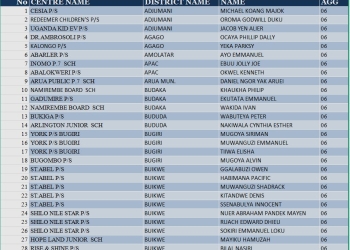Dongguan, China, July 7, 2023 – The annual HUAWEI Developer Conference — HDC.Cloud 2023 for this year — officially kicked off in Dongguan, China on July 7, with branch sites in more than 30 cities across China and over 10 countries globally. Developers from all over the world have been invited to attend this event, either in person or online, to discuss the booming AI industry, the new opportunities it has created, its latest applications, and their experiences working with AI.
During his keynote speech on the afternoon of July 7, Mr. Zhang Ping’an, Huawei’s Executive Director and CEO of Huawei Cloud, announced the launch of Huawei Cloud Pangu Models 3.0 and Ascend AI cloud services. Guided by its three stated purposes — reshaping industries, honing technologies, and sharing success — Pangu Models 3.0 will focus on building up core competitiveness and helping customers, partners, and developers operationalize AI and drive real value creation across industries.
With Ascend AI cloud services, a single compute cluster can provide 2,000 petaFLOPS of compute capacity, and a 1,000-card cluster can train a multi-billion parameter model for an uninterrupted 30 days. More reliable AI computing power has helped make large models more accessible than ever to industry customers.

Mr. Zhang said: “Huawei Cloud Pangu models will empower everyone from every industry with an intelligent assistant, making them more productive and efficient. We will uphold our mission of “AI for Industries”, and use Pangu models to reshape all industries with AI. Every developer will have the power to change the world.”
Reshaping Industries with Huawei Cloud Pangu Models 3.0
Huawei Cloud Pangu models were designed to focus on the practical needs of specific industry scenarios. The newly-launched Pangu Models 3.0 use a “5+N+X” three-layer architecture.
The L0 layer consists of five foundation models: NLP, CV, multimodal, prediction, and scientific computing, which provide general skills to power an endless possibility of industry-specific applications. Pangu Models 3.0 are available in different sizes: 10 billion parameters, 38 billion parameters, 71 billion parameters, and 100 billion parameters, meeting diverse customer needs and different standards on latency and response times. Brand-new capability sets are also provided, such as knowledge-based Q&A, copywriting, and code generation for the Pangu NLP model; and image generation and understanding for the Pangu multimodal model. All of these capability sets will be made available to customers and partners, and will be consistent regardless of the model size (number of parameters).
The L1 layer consists of N industry-tailored models. Huawei Cloud can provide customers with industry models it has trained on open industry datasets, including Pangu models for government, finance, manufacturing, mining, and meteorology. Alternatively, customers can train their own models using their own datasets based on Huawei’s L0 or L1 Pangu models.
The L2 layer provides pre-trained models for specific industry scenarios and tasks, such as intelligent government hotline, intelligent branch assistant, lead compound screening, conveyor belt foreign object detection, and typhoon trajectory prediction. These models can be quickly deployed off-the-shelf.
This decoupled, hierarchical architecture allows the Pangu models to be quickly adapted to a wide range of downstream tasks. Customers can load independent datasets to train their own models. They can choose to upgrade foundation models, or just upgrade capability sets.
Based on the L0 and L1 models, Huawei Cloud also offers industry model development suites, which allows customers to quickly train their own models using their own datasets. In addition, the Pangu models support different deployment modes, including public cloud, a dedicated large model zone on public cloud, and hybrid cloud. This helps to ensure that the varied security and compliance requirements of different customers are met.

Mr. Zhang said: “Pangu models were born to serve industry-specific needs, and we are here to help customers from every industry to develop and use large models to solve their problems in ways never seen before.” Today, Pangu models are being used in a wide range of industries, such as finance, manufacturing, drug R&D, coal mining, and railway.
In terms of government services, the Shenzhen Futian district government worked with Huawei Cloud to develop the intelligent government service assistant Xiaofu, which is powered by the Pangu Government Model. This intelligent assistant can accurately understand users’ intention and map it to a pre-defined service item, so that the service they are requesting can get done quickly. The Pangu Government Model has been trained on over 200,000 government data records, covering government policy documents, government encyclopedia knowledge bases, government hotline data, and other common knowledge, so it has extensive knowledge on government policies, regulations, and government service processes. Xiaofu, the intelligent government service assistant, has demonstrated high accuracy and professionalism since its launch.
Mr. Zhang said: “Pangu models were born to serve industry-specific needs, and we are here to help customers from every industry to develop and use large models to solve their problems in ways never seen before.” Today, Pangu models are being used in a wide range of industries, such as finance, manufacturing, drug R&D, coal mining, and railway.
In terms of government services, the Shenzhen Futian district government worked with Huawei Cloud to develop the intelligent government service assistant Xiaofu, which is powered by the Pangu Government Model. This intelligent assistant can accurately understand users’ intention and map it to a pre-defined service item, so that the service they are requesting can get done quickly. The Pangu Government Model has been trained on over 200,000 government data records, covering government policy documents, government encyclopedia knowledge bases, government hotline data, and other common knowledge, so it has extensive knowledge on government policies, regulations, and government service processes. Xiaofu, the intelligent government service assistant, has demonstrated high accuracy and professionalism since its launch.
So far, the Pangu Mining Model has been used at eight coal mines in China. A single model can support more than 1,000 sub-scenarios for coal mining, including digging, drivage, equipment control, transport, ventilation, coal washing, and more. It helps to build safer, more intelligent coal mines that can run efficiently with just a small underground crew or even no underground crew at all.
On railways, the Pangu Railway Model can accurately identify 67 types of freight cars and over 430 types of faults found on railways and freight cars. It can quickly scan millions of images captured by the railway TFDS system and filter out 95% of the images that are fault-free. This way, train inspectors can focus on the remaining images, and this helps them improve both efficiency and accuracy.
In meteorology, the Pangu Meteorology Model (or Pangu-Weather) is the first AI model to have surpassed state-of-the-art numerical weather prediction (NWP) methods in terms of accuracy. The prediction speed is also several orders of magnitude faster. In the past, predicting the trajectory of a typhoon over 10 days took 4 to 5 hours of simulation on a high-performance cluster of 3,000 servers. Now, the Pangu model can do it in 10 seconds on a single GPU of a single server, and with more accurate results.
In financial services, the Pangu Finance Model, pre-trained on large datasets containing data about bank policies, procedures, and case studies, can automatically generate the correct service workflows and guides for bank tellers based on the customers’ service requests. This helps them handle service requests more efficiently and confidently. Essentially, the Pangu Finance Model has given each bank employee their own personal intelligent assistant.
In manufacturing, in the past, it took more than three hours to develop a one-day parts allocation plan for a single production line.
The Pangu Manufacturing Model, pre-trained on data about parts and components, business processes, and rules from Huawei’s own production lines, is capable of accurate intent understanding. By calling the Huawei OptVerse AI Solver plugin, the Pangu model can develop a 3-day production plan in just 1 minute.
In the field of drug R&D, developing a new drug used to take an average of 10 years and USD1 billion. Now, the Pangu Drug Molecule Model is able to accelerate lead compound discovery from several years to just one month, reducing drug R&D costs by 70%. Using this model, a team led by Professor Liu Bing of Xi’an Jiaotong University recently discovered a new superantibiotic — the first new antibiotic to be discovered in 40 years, with brand-new protein targets and in a category of its own.
Another Option to Build AI: Honing Technologies for Efficiency
In addition to better AI models, Huawei Cloud enhances the underlying technologies that power AI. These include an AI compute cloud platform built on Kunpeng and Ascend, CANN (a heterogeneous computing architecture), MindSpore (an all-scenario AI framework), and ModelArts (AI development pipeline). Key capabilities include distributed parallel acceleration, operator and compilation optimization, and cluster communications optimization for AI model development and running. Huawei’s core tech trains AI models up to 1.1 times faster than popular GPUs.

















